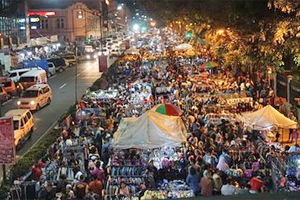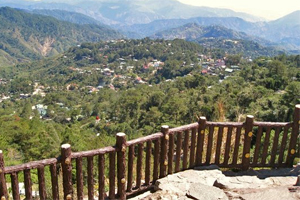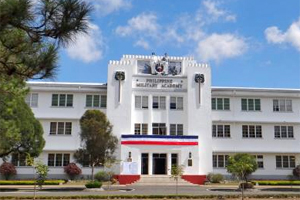|

ABOUT BAGUIO
Baguio City, nicknamed Summer Capital of the Philippines due to its temperate mountain climate, and City of Pines for its many conifers, is a popular escape route for Metro Manila residents seeking green and (relatively) quiet refuge. Baguio City also serves as a gateway in the Cordilleras to destinations such as Banaue, Mount Pulag, and Sagada. Beginning as an American hill outpost in the 1900s, Baguio has been badly devastated by the Central Luzon earthquake in 1990, but the city has since recovered.
BEST TIME TO VISIT
The cool, dry season in Baguio City is between November and April, when the northeast monsoon blows through northern Luzon, and the volume of precipation is at its lowest. The rest of the year is typically rainy.
GETTING THERE
To get to Baguio from outside Luzon or the country, visitors still need to pass through Metro Manila or Clark Airport, and from there continue on to Baguio City:
By Car — DRIVING DIRECTIONS
By Passenger Bus
From Manila — DAGUPAN BUS | GENESIS BUS | VICTORY LINER
From Clark Airport — PARTAS BUS Clark to Sison (Pangasinan) | VICTORY LINER Sison to Baguio
From Angeles City — PHILIPPINE RABBIT | SWAGMAN TRAVEL | VICTORY LINER
By Plane — AIRTAXI.PH Chartered flights (no commercial airline currently serves Baguio City)
GETTING AROUND
Get around the city by jeepney like the locals do, or for convenience, by taxi, which can be hired per single trip or for several hours. If you want complete control of your trips, you can also do car rental.
MUST SEE

|
|
Baguio City Night Market — The area covering Harrison Road, Session Road, and surrounding streets opens till late to cater to night-time shoppers and strollers.
|

|
|
Burnham Park — Explore the different clusters of Burnham Park Reservation (a historic urban park designed by American architect Daniel Burnham), including the Athletic Bowl, Burnham Lagoon, Children's Playground, Igorot Garden, Japanese Peace Tower, Melvin Jones Grandstand, Orchidarium, Picnic Grove, Pine Trees of the World, Rose Garden, Skating Rink, and Sunshine Park.
|

|
|
Camp John Hay — Formerly a USAF military base, Camp John Hay is a forest watershed reservation, which features include the Bell House, Bell Amphitheater, History Trail and Secret Garden, Cemetery of Negativism (Lost Cemetery), a multi-terraced flower garden, the Manor Hotel, and Forest Lodge (the latter two hotels operated by the management of Camp John Hay
|

|
|
Mines View Park — Located on a land promontory 4 km from downtown Baguio City, Mines View Park overlooks the mining town of Itogon, particularly the abandoned gold and copper mines of Benguet Corporation, and offers a glimpse of the Amburayan Valley. The observation deck is located below a winding stone-covered stairway.
|

|
|
Panagbenga Festival — Baguio's month-long Blooming Flowers Festival, held every February, features street parades with colorful floral floats, themed costumes, and street dancing presentations.
|

|
|
Philippine Military Academy — The Philippines' premier military cadet training center. It is recommended to visit P.M.A. during Saturdays as this is where the cadet groups practice field activities. The "Hundred Night Show" is a yearly play conducted by cadets and officers during December.
|

|
|
Session Road — Baguio's main thoroughfare, center of the city's hustle and bustle.
|
WHERE TO STAY
|
|


